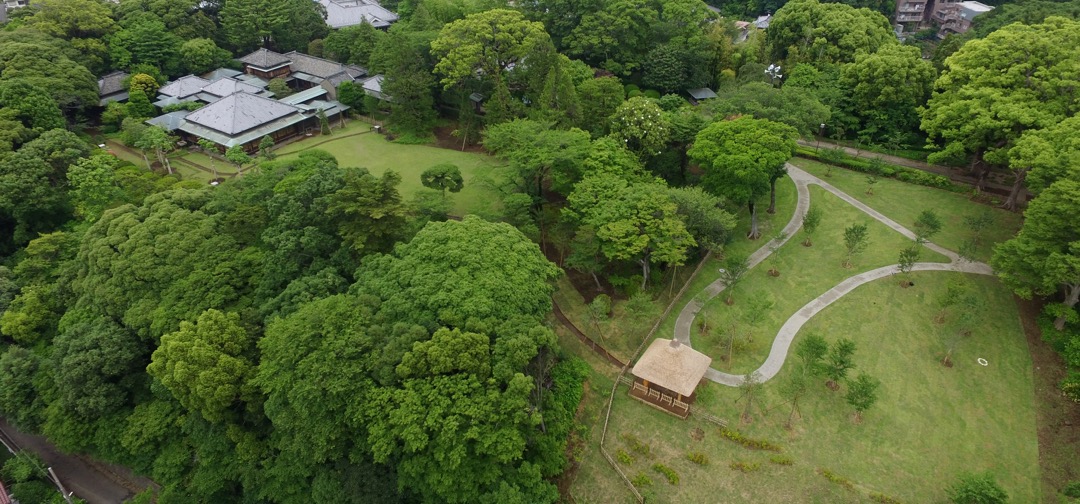Tojo-tei House: a nationally designated Important Cultural Property
Original owner: Akitake Tokugawa
Completed: April 1884
Total floor space: 725㎡
Style: Pure Japanese style
Structure: Wooden two-storey building

This is the only building owned by a member of the Tokugawa family in the Meiji period that remains almost untouched. After about two years of construction, a completion ceremony was held in April 1884. After additions, the house reached its present extent of 23 rooms in nine buildings connected by corridors. It is considered a very valuable example of how a former daimyo (feudal lord) would live.
While following the broad patterns of a daimyo mansion during the Edo period, the Tokugawas were removed from the seat of power in the Meiji period and so their lifestyles changed greatly, downsizing considerably. The buildings can be broadly divided into three types. 1) Formal section for receiving guests 2) Section lived in on a daily basis 3) Section for workers The structure and used timber differ depending on how each section was used.
■Uchigura (Inner Storehouse) Building
■Omote-zashiki (Parlor) Building
■Goima (Living Room)
■Naka-zashiki (Spare Room) Building
■Oku-zashiki (Inner Parlor) Building
■Yudono
■Hanare-zashiki (Detached Parlor) Building
■Shishanoma (Envoy’s Quarters)Buildings
